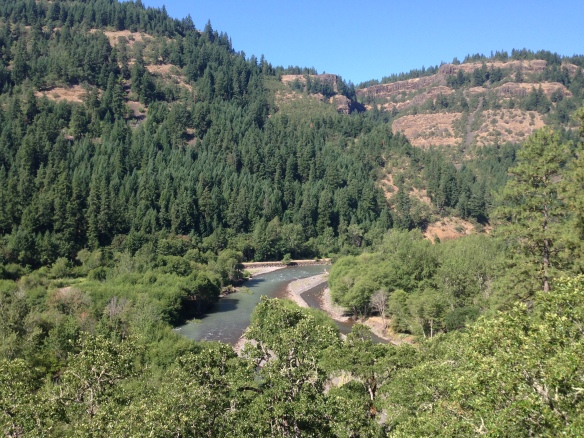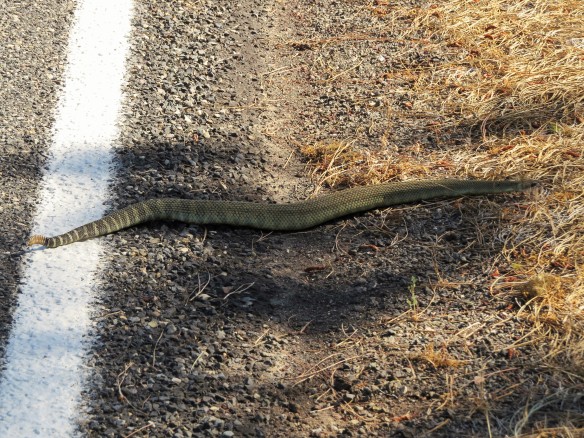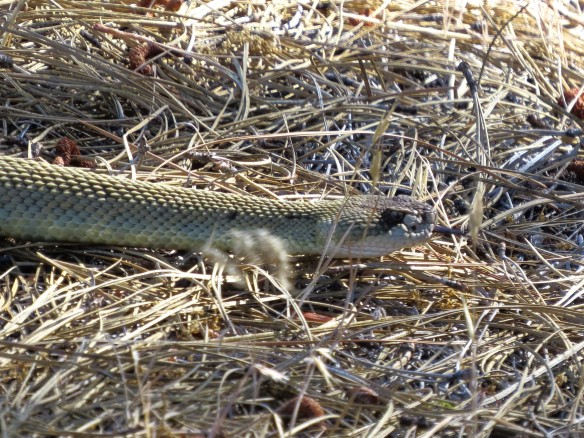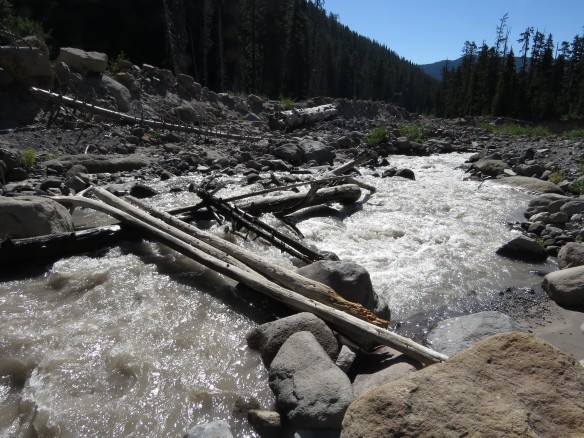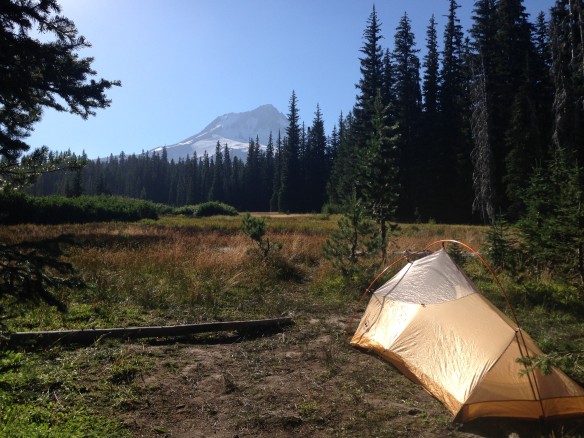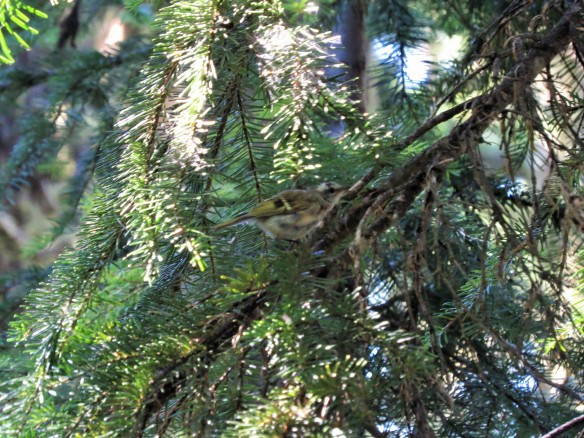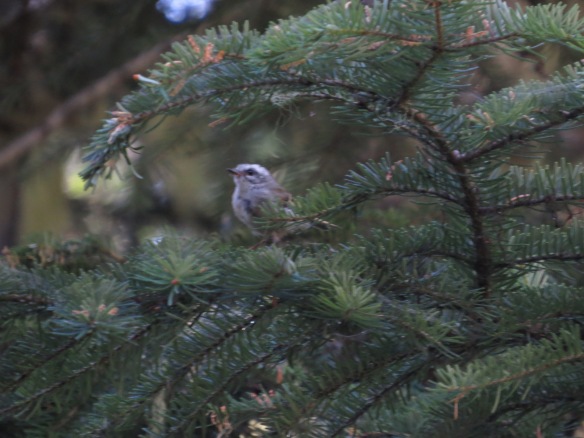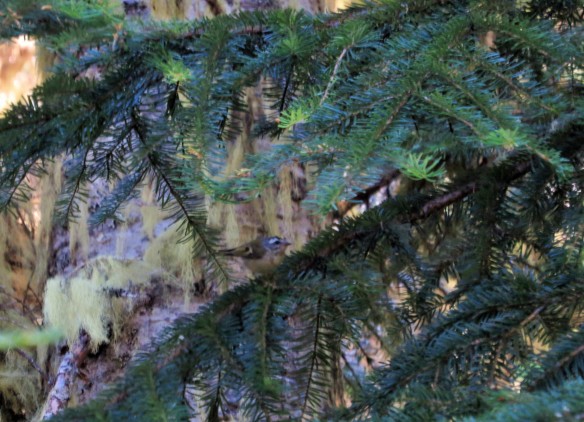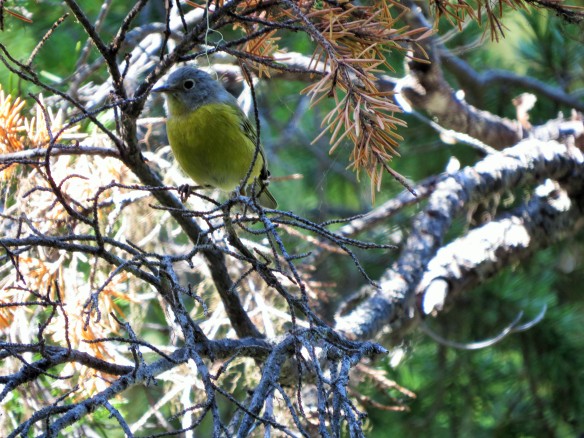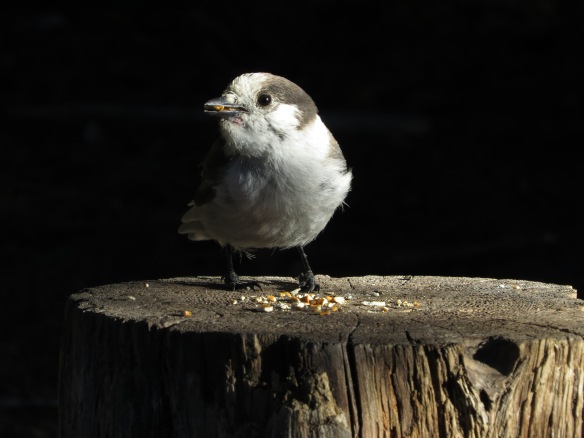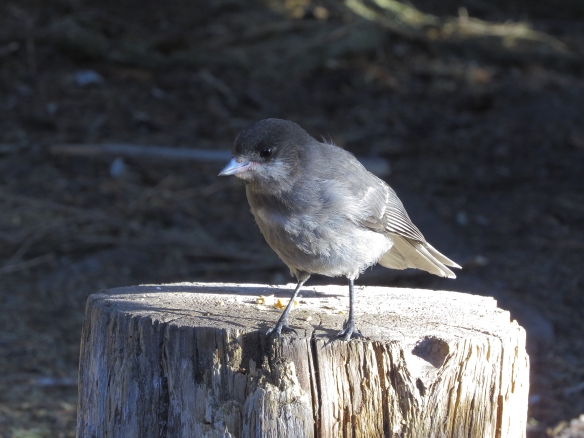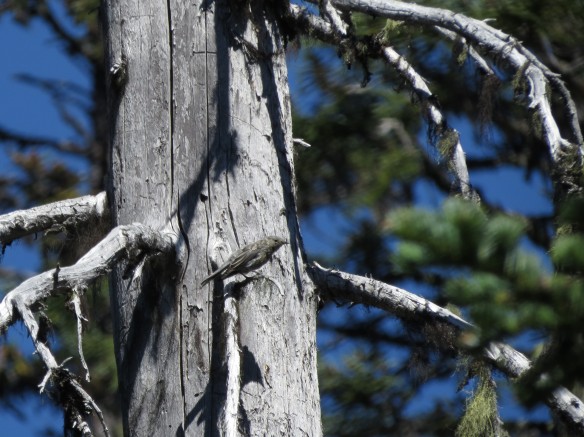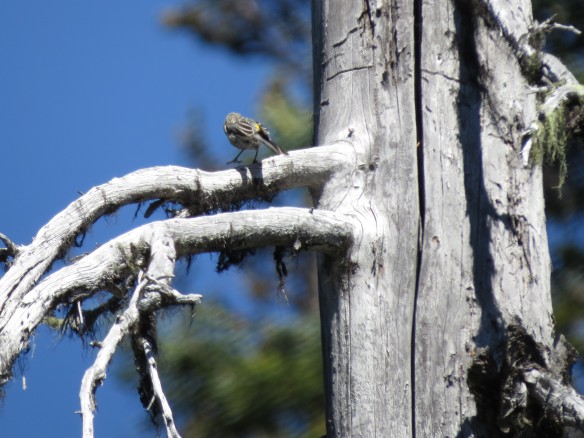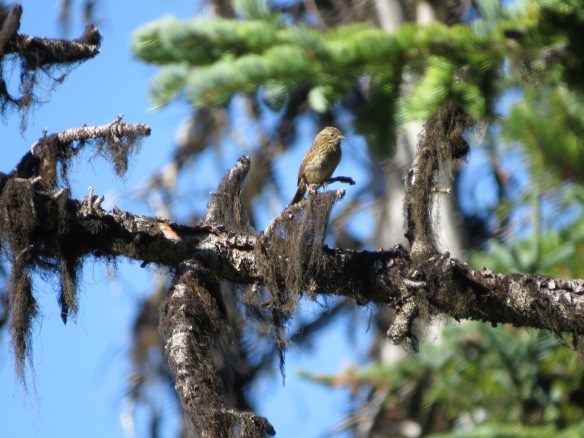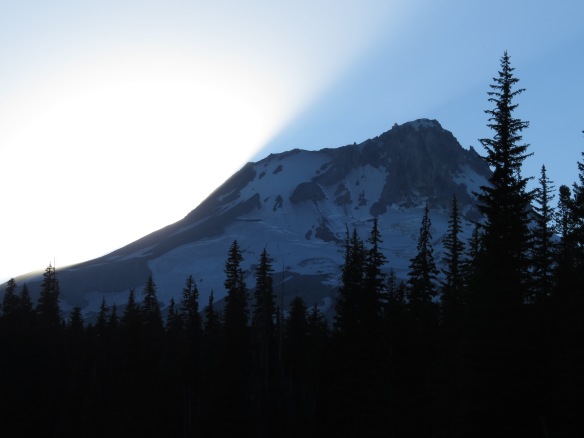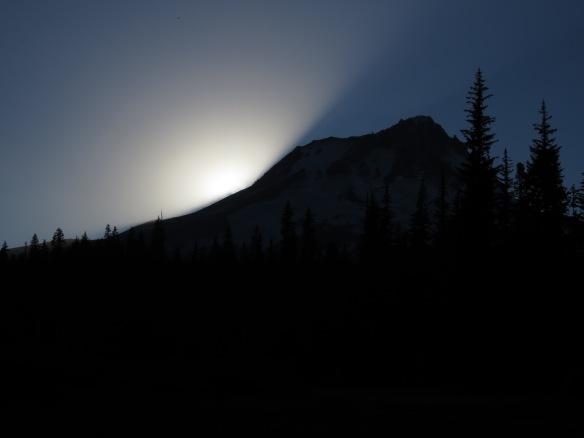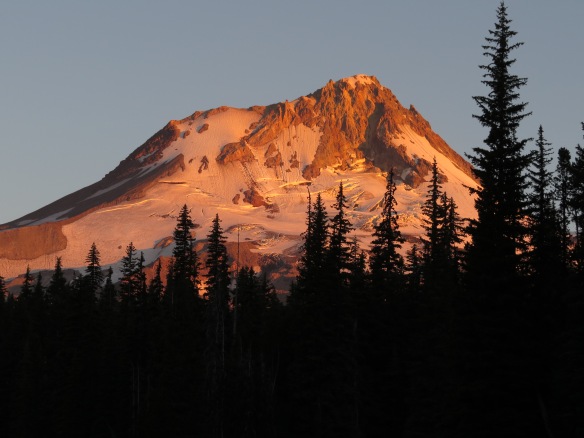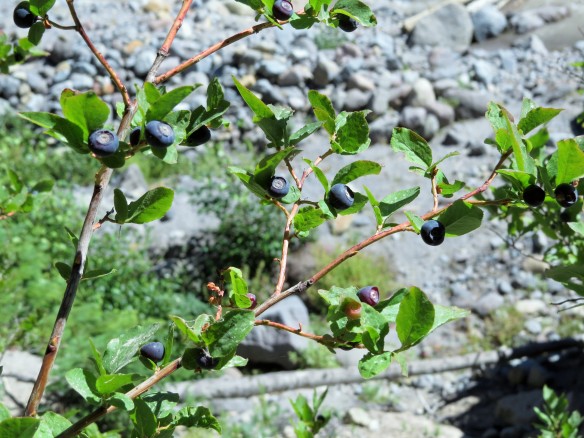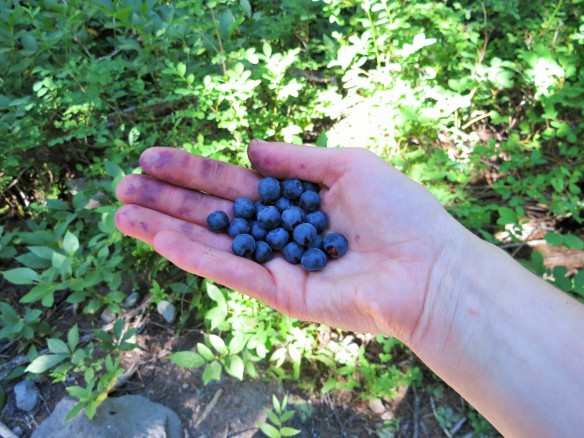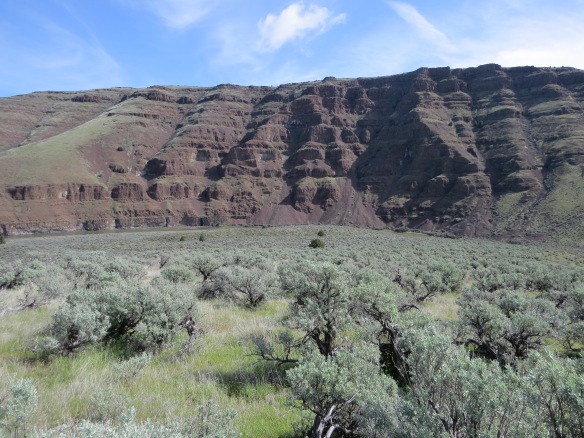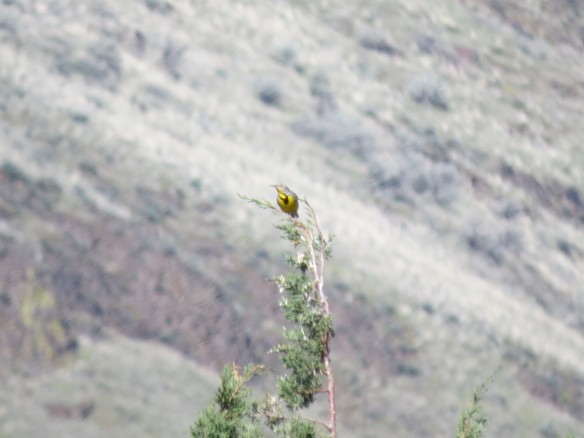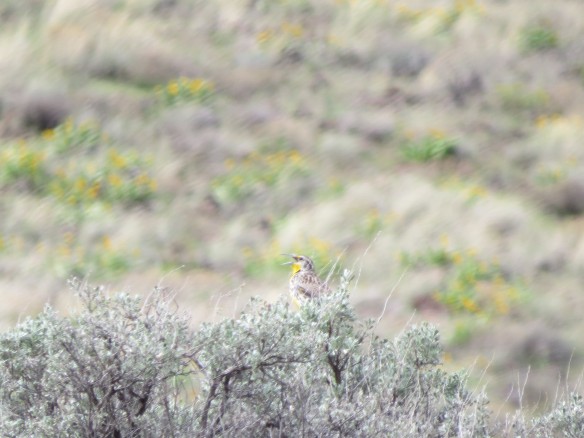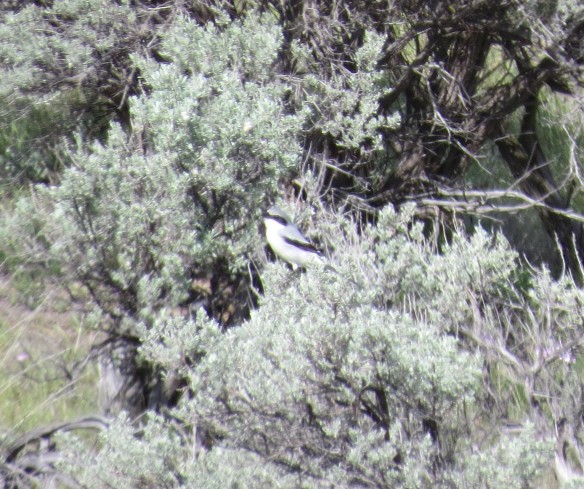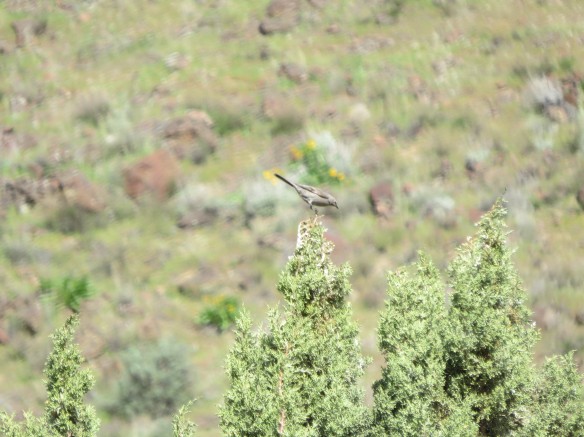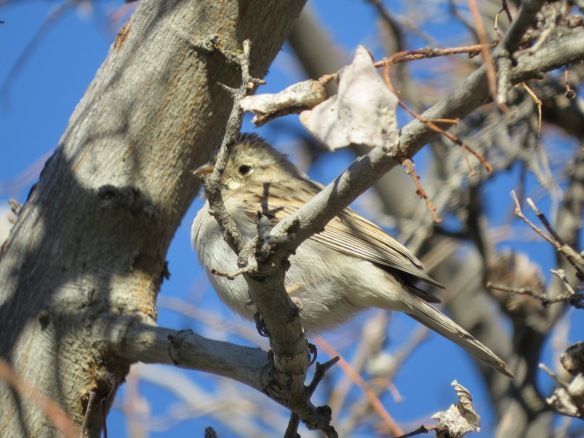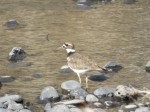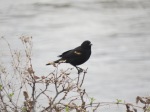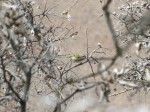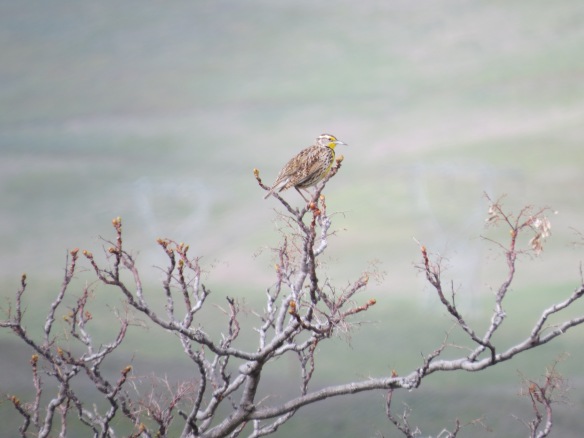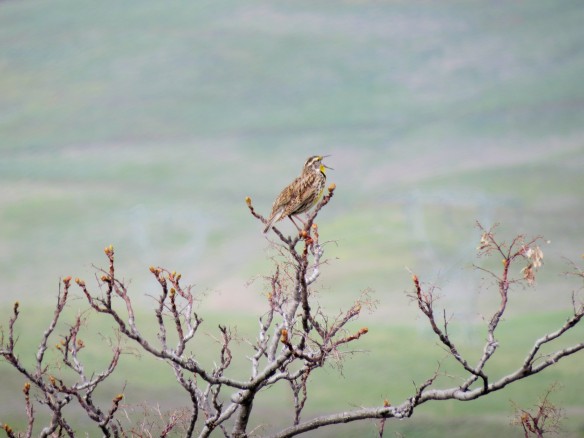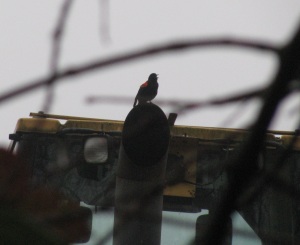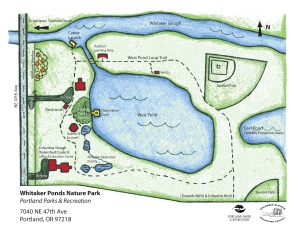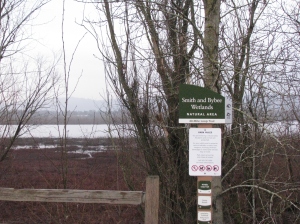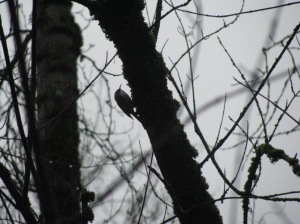On day 3 I got greedy. I thought I should have seen more by this point. Where were the owls? Where were the Gray Catbirds? As I drove east and into the heat of the day, I stubbornly watched that small window of summer birding opportunity close. Nevertheless, I passed through gorgeous canyon scenery, laden with oaks and fir along the Klickitat River.
While driving along the Glenwood Hwy, I spotted a snake in the middle of the lane! It retracted like a slinky, while I cringed unable to avoid driving over it. Hoping it wasn’t flattened, I pulled over to check, as two more cars drove by also just barely missing it.
Luckily, it survived crossing the highway intact. The Western Rattlesnake (Crotalus oreganus) slithered along confidently (as it should) while my jaw dropped in awe of this impressive creature.
So cool. I’m happy I didn’t kill it (or find it while hiking or camping). It’s the first rattler I’ve seen in the wild in the Pacific NW. Or anywhere.
After this, with no solid plan in mind I called home to see how hot it was in the house. 92 degrees? Gross. I continued along, aiming for higher (cooler) elevation. Since it was a Sunday (so possibly less crowded), I decided on Elk Meadows, a 5-mile round trip hike in the SE shadow of Mt Hood and a backpacking destination I’ve been meaning to check out for a while now.
It was perfect except for one super sketchy stream crossing, where I managed to lose two (and recover one) water bottles.
Other than that unfortunate experience, it was a relatively tame and gorgeous hike to the camping spot.
Along the trail, there were some exciting birdy surprises. Like a flock of normally cute, now not-so-cute, scruffy, molting Golden Crowned Kinglets.
The best surprise, and winner for causing the highest spike in adrenaline while attempting to take a clear photograph, was this Nashville Warbler! Note the full eye-ring, gray hood, yellow throat, breast, and belly. So sweet and a cool find.
At the campsite, opportunistic Gray Jays visited with or without (“accidentally”) spilled and crumbled pretzels. Ethics, eh-hem.
A few youngins stopped by too.
One grey bird that puzzled me was this one.
That was until it turned around and showed me its yellow-rumped bum. Of course, Yellow-rumped Warbler.
While leaving the campsite, I finally got a photo of the sparrow I’d seen on an off in the meadow. Buffy eye-ring, breast streaks, small bill, it’s a Lincoln’s Sparrow! The setting fits too, as Cornell’s All About Birds states: “A drab, but handsome bird of boggy areas.” I’d say so.
Elk Meadow is positively serene. Babbling brooks and bird songs audible from camping spots, deer wandering out munching on grass in the meadow after sunset, oh yeah, and the sun sets behind Mt. Hood. Be still my emotions.
Wait for it. Then in the morning, the sun rises and the mountain lights up. Not a bad place to spend a night or two- and in the mean time watch the birds!
And on the way out? Plump huckleberries!
Epic. Thanks for reading!
Tweets and chirps,
Audrey

